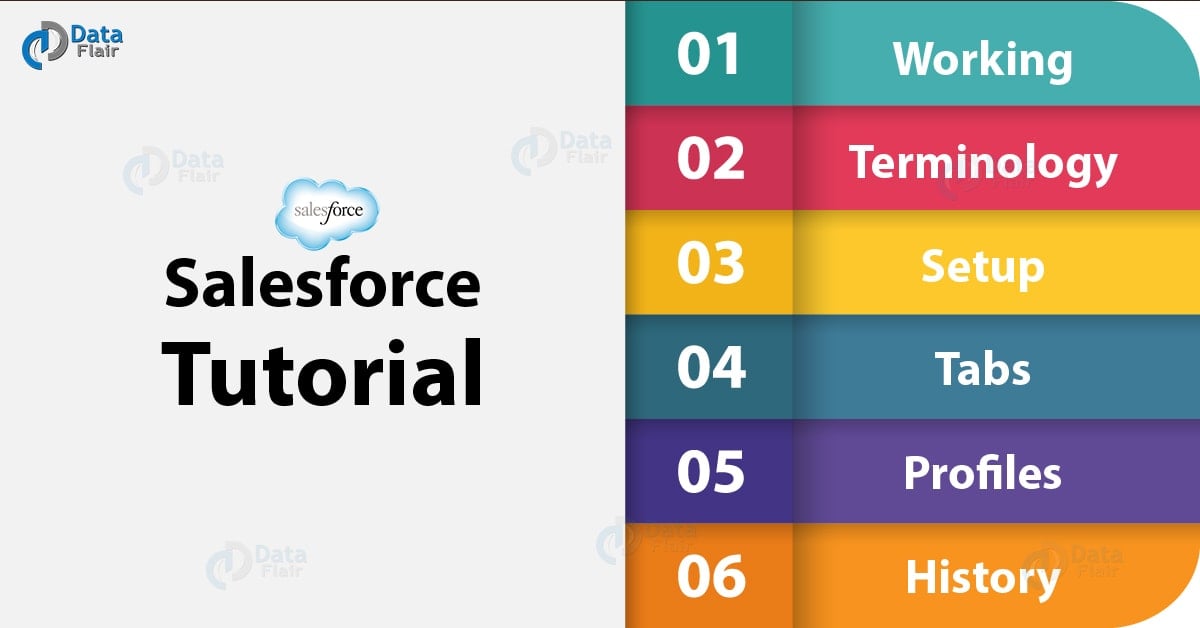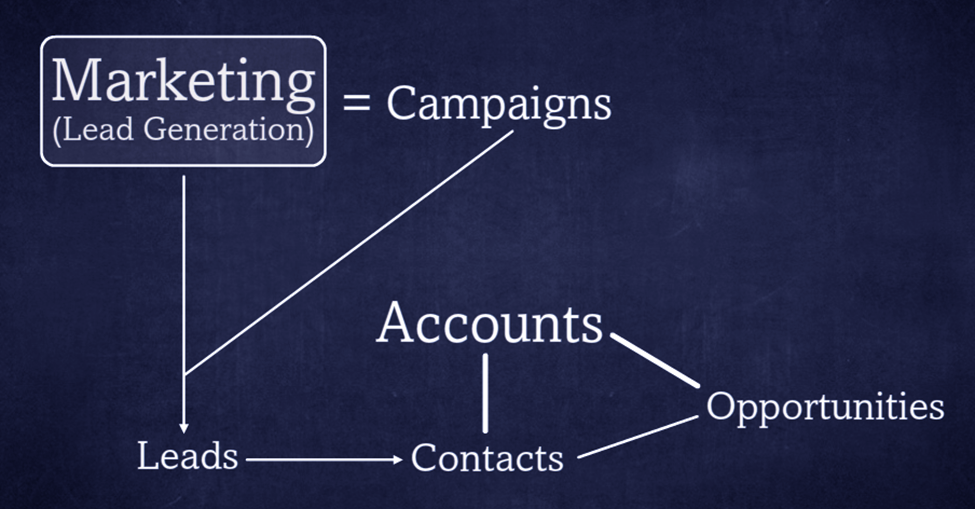Salesforce Tutorial For Beginners – Learn Salesforce Quickly
FREE Online Courses: Knowledge Awaits – Click for Free Access!
1. Salesforce Tutorial
Today, we will start our new journey with Salesforce Tutorial. This Salesforce tutorial for beginners will provide all the information that is necessary to learn Salesforce. Moreover, in this Salesforce Technology tutorial, we will discuss the meaning of Salesforce, how Salesforce works and also why Salesforce used. Along with this, we are going to learn Salesforce terminology, profiles in Salesforce, its history, and how to download it.
So, let’s start Salesforce Tutorial.
Let’s explore Salesforce Architecture
2. What is Salesforce Technology?
Salesforce is a Customer Relationship Management tool (CRM), it is used to keep the track on the company’s relationship with the existing clients of the organization.
In the initial stage, Salesforce started Software as a Server (SaaS) CRM company. Now, in the current scenery, Salesforce provides various software solutions as well as platforms for its users and developers on which they can develop and distribute custom software.
In this way, all the customers can share a common technology and can use the newest and the updated software in their network.
3. Salesforce Tutorial – History
This organization was founded in the year 1999 by former Oracle executive brandy Benioff, Parker Harris, Dave Moellenhoff, and Frank Dominguez as an organization specializing in software as a service (SaaS). Harris, Moellenhoff, and Dominguez, 3 software developers previously a Company or firm Left Coast software, were introduced to Benioff through a devotee and former Oracle colleague Bobby Yazdani. Harris and team wrote the initial sales automation software, that was launched in 1st customers during Sept-Nov 1999.
Have a look at Salesforce Environment
4. How Does Salesforce Work?
When an individual is using Salesforce there are really high chances that an individual will employ main data objectives to keep a track on sales process and lead generation efforts these objects are:
- Accounts
- Contact
- Opportunity
- Leads
- Campaigns
Accounts are the companies that an individual deal with. Contracts are the people in that company and opportunity are the deals that you are making with the companies in order to sell them your product or the services provided by you.
Leads are different from these three. There are a certain amount of people who have shown their interest in the companies in the past but sales weren’t executed. Leads that generates by the company marketing efforts like engaging in speaking procedures or webinars.
Do you know about Salesforce Navigation
Salesforce Campaigns are salesforce method of keeping a track on the marketing efforts.
Let’s take an example of the Salesforce Technology:
Let us assume that a person named Mark goes to a conference and gives a talk, he gets a list of all the people who are going to attend the conference. He could create a Campaign in the Salesforce for a specific conference and talk. When he imposes these attendees as lead they will link to the campaign.
Salesforce Campaigns are a really good way to track from where these leads are coming and what are your efforts towards them and whether these efforts are working or not.
Let’s take a tour to Salesforce Schema Builder
5. Salesforce Tutorial – Salesforce Terminology
a. Salesforce App – It contains all the object, tabs, and all the other functionalities and also consist of a name, logo and ordered tabs.
b. Salesforce Object – It is considered as the heart of all apps in Salesforce and is very similar to the database table as it provides not just structure for the storage of data but also powers the interface element.
Objects are of two type-
- Custom object
- Standard object
c. Tab – A tab means a single object. This acts as a starting for all
- Viewing
- Editing
- Entering information on some particular object.
d. Fields – These are the properties that define the object. It is like a column for the database.
6. Salesforce Tutorial – Setup the Salesforce App
Following are the several steps for the setup of Salesforce App:
- Search for “setup” next to the app name in the right corner to the top.
- Go to built which is on the left, then create and then select “apps”.
- Click on the new, in the middle of your computer screen.
- Choose “Costume App”.
- Enter the “app Label”.
- Then choose a profile picture which is appropriate for your app and click next.
- Choose the tabs according to your need and click next.
- And make a selection of different apps you want to assign and then click Save.
Do you know about Salesforce Role Hierarchy
7. Salesforce Tutorial – Tabs
Tabs are used to access objects (tables) within the Salesforce App. They seem on top of the screen, almost like a toolbar. It contains shortcut links to multiple objects. On clicking the object name in a very tab, records in that object will display. Tabs also contain links to the external website, custom pages, and alternative URLs. The highlighted portion within the below screenshot is that of Salesforce tabs.
All Salesforce Applications can have a Home tab by default. Standard tabs get to choose by clicking on ‘+’ within the Tab menu. Accounts, Contacts, Groups, Leads, Profile the standard tabs which Salesforce offers. For instance, Accounts tab will show you the list of accounts within the SFDC org and Contacts tab will show you the list of contacts within the SFDC org.
8. Profiles in Salesforce
Every user who has to access the data or SFDC org will link to a profile. A profile is an assortment of settings and permissions that control what a user can read, access and modify in Salesforce.
A profile in Salesforce itself monitors all the things like user permissions, object permissions, field permissions, app settings, tab settings, apex class access, Visualforce page access, page layouts, record types, login hour and login IP addresses.
You can outline profiles based on the background of the user. As an example, different levels of access can set for various users like a supervisor, developer, and sales representative.
You must read the Salesforce Triggers tutorial
Similar to tabs, we are able to use any standard profile or create a custom profile. By default, the available customary profiles are read-only, standard user, marketing user, contract manager, answer manager and supervisor. If you would like to create custom profiles, you have to 1st clone standard profiles and then edit that profile. Do note that one profile can allow several users. However, one user cannot get several profiles.
So, this was all in the Salesforce Tutorial for Dummies. Hope you like our explanation on Salesforce Technology.
9. Conclusion – Salesforce Tutorial
Hence, in this Salesforce Tutorial, we learned what is Salesforce Technology. Moreover, we discussed how Salesforce works and what are the common terminology in Salesforce. Also, we saw profiles in Salesforce, Salesforce example, App & Tabs in Salesforce. Also, we Salesforce History and Salesforce download. Hope this Salesforce Tutorial helped you. Still, if any question you want to ask, comment freely, we will definitely get back to you.
See also –
Salesforce Static Resources
For reference
We work very hard to provide you quality material
Could you take 15 seconds and share your happy experience on Google



